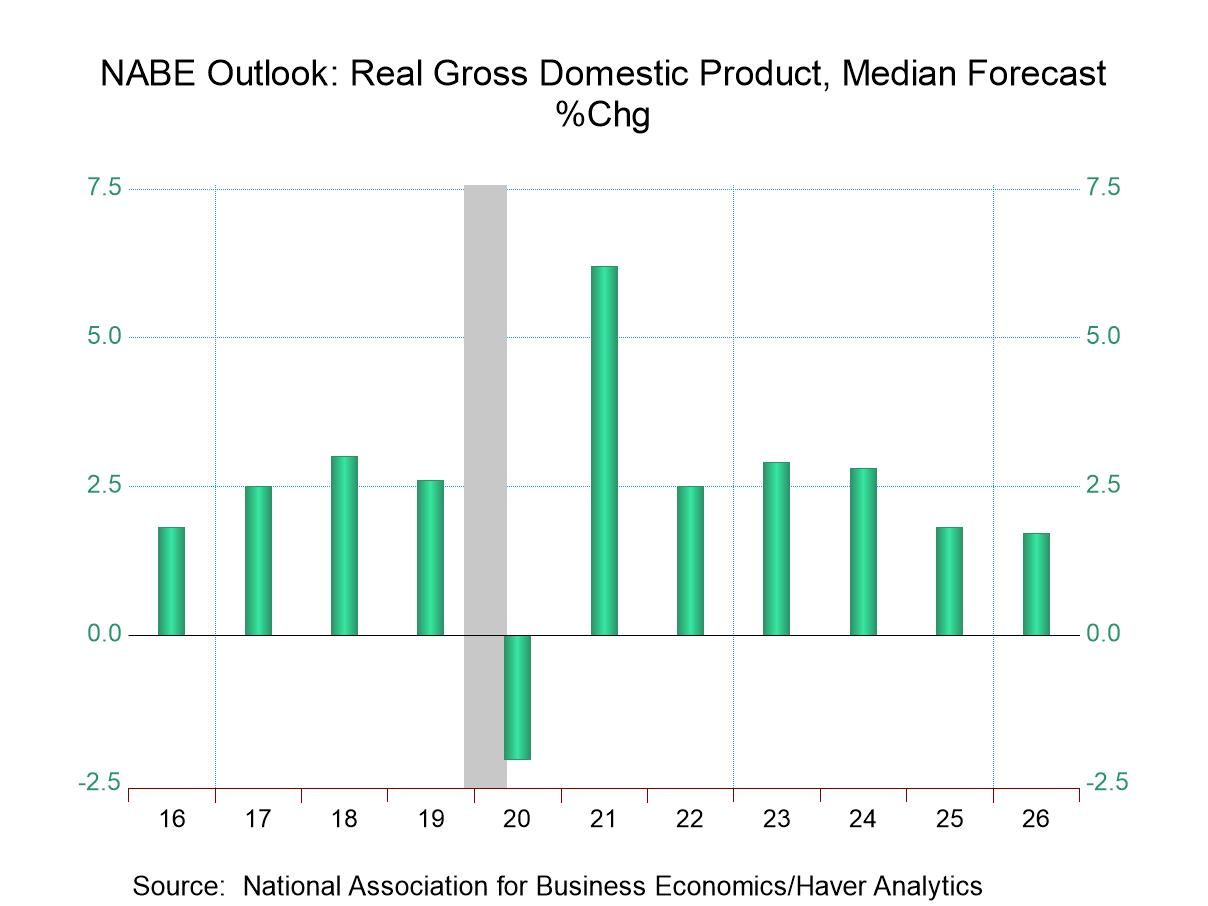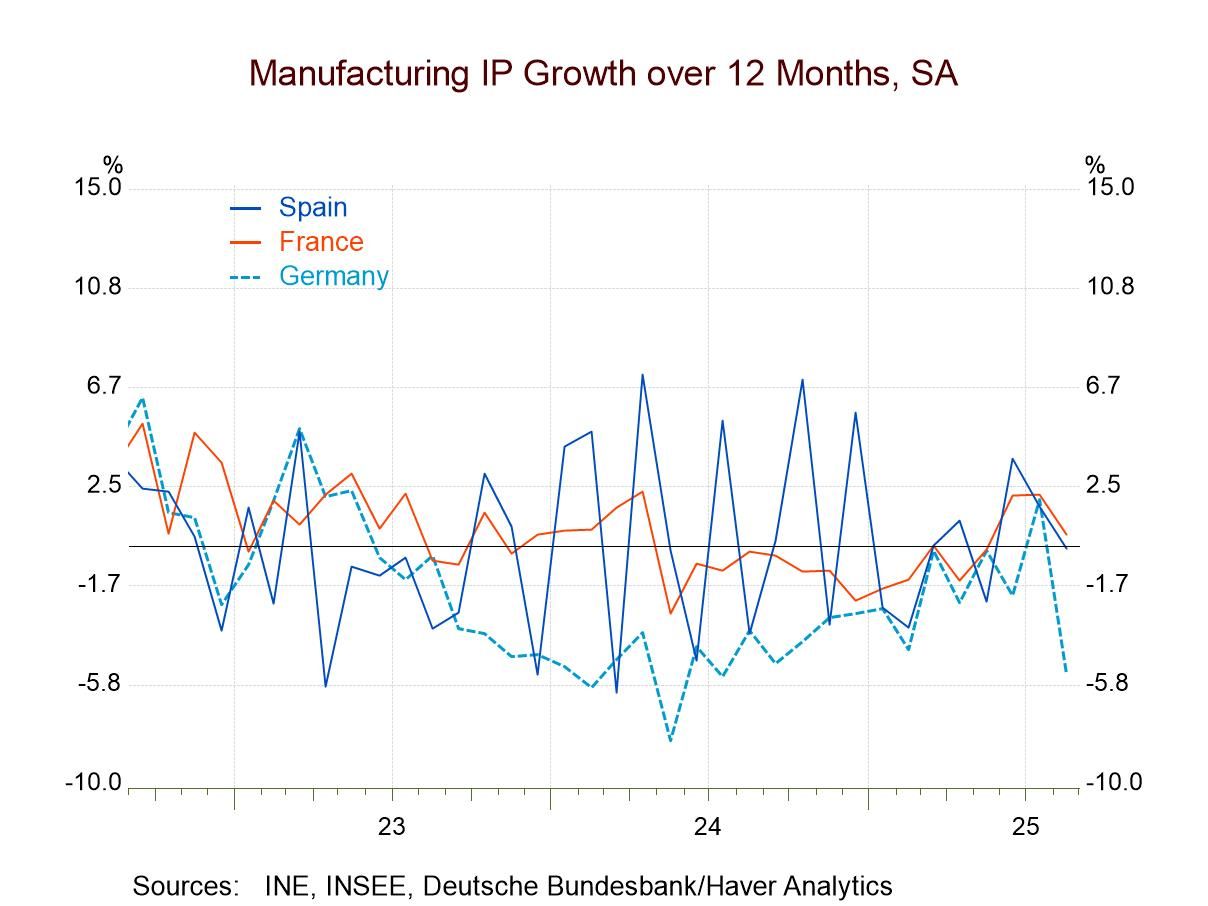 Global| May 11 2004
Global| May 11 2004Chain Store Sales Up Despite Rise In Gas Price
by:Tom Moeller
|in:Economy in Brief
Summary
Chain store sales rose another 0.3% last week on top of a 1.5% gain the prior period, according to the International Council of Shopping Centers (ICSC)-UBS. Sales began the month of May 1.7% above the April average. During the last [...]
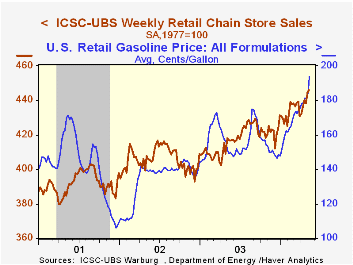
Chain store sales rose another 0.3% last week on top of a 1.5% gain the prior period, according to the International Council of Shopping Centers (ICSC)-UBS.
Sales began the month of May 1.7% above the April average.
During the last ten years there has been a 59% correlation between y/y change in chain store sales and the change in non-auto retail sales less gasoline.
The ICSC-UBS retail chain-store sales index is constructed using the same-store sales reported by 78 stores of seven retailers: Dayton Hudson, Federated, Kmart, May, J.C. Penney, Sears and Wal-Mart.
The gain in chain store sales occurred despite a sharp increase last week in gasoline prices to an average $1.94 per gallon (+30.2% y/y).
For analysis of higher gasoline and energy prices on the consumer from the Federal Reserve Bank of Dallas see the following two articles: U.S. Gasoline Prices on the Rise Once Again and Energy Prices and the Economy
| ICSC-UBS (SA, 1977=100) | 05/08/04 | 05/01/04 | Y/Y | 2003 | 2002 | 2001 |
|---|---|---|---|---|---|---|
| Total Weekly Retail Chain Store Sales | 445.9 | 444.7 | 7.0% | 2.9% | 3.6% | 2.1% |
by Tom Moeller May 11, 2004
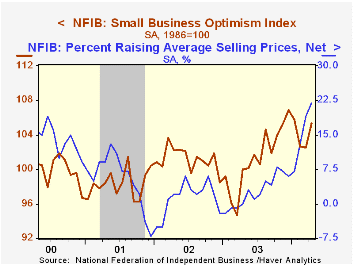
The Small Business Optimism Index published by the National Federation of Independent Business (NFIB) rose 2.8% in April following three consecutive months of decline. The increase pulled the level of optimism to within 1.4% of the record high set in December.
The m/m increase reflected sharp increases in the percentage of firms both raising and planning to raise average selling prices. Also, the percentage of firms expecting the economy to improve bounced off a March low.
The percentage of firms expecting higher sales in six months rose slightly but the percentage of firms planning to add to capital expenditures dipped to 34%. The percentage planning to raise employment ticked up to 14% from 13% in March.
During the last ten years there has been a 47% correlation between the level of the NFIB index and the y/y change in real GDP.
About 24 million businesses exist in the United States. Small business creates 80% of all new jobs in America.
| Nat'l Federation of Independent Business | April | Mar | Y/Y | 2003 | 2002 | 2001 |
|---|---|---|---|---|---|---|
| Small Business Optimism Index (1986=100) | 105.4 | 102.5 | 5.4% | 101.3 | 101.2 | 98.4 |
by Tom Moeller May 11, 2004
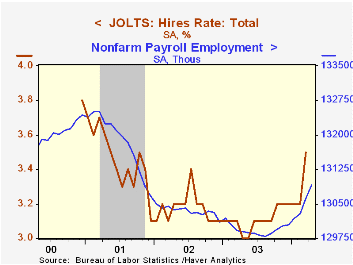
The Job Openings & Labor Turnover Survey (JOLTS) from the US Bureau of Labor Statistics supports recent data indicating that the US job market has improved. The hires rate rose to 3.5% in March versus a monthly low of 3.0% last Spring and 3.1% during all of last year.
The survey dates only to December 2000 but has since followed closely the movement in nonfarm payrolls.
Broad based improvement in the hires rate in the manufacturing, services and construction industries accounts for the rise in the total.
The job openings rate has similarly improved to 2.3% from an August low of 2.0% and 2.1% for all of last year.
| JOLTS (Job Openings & Labor Turnover Survey) | March | Feb | Mar '03 | 2003 | 2002 | 2001 |
|---|---|---|---|---|---|---|
| Job Openings Rate: Total | 2.3% | 2.2% | 2.1% | 2.1% | 2.2% | 2.8% |
| Hires Rate: Total | 3.5% | 3.2% | 3.1% | 3.1% | 3.2% | 3.5%S |
Tom Moeller
AuthorMore in Author Profile »Prior to joining Haver Analytics in 2000, Mr. Moeller worked as the Economist at Chancellor Capital Management from 1985 to 1999. There, he developed comprehensive economic forecasts and interpreted economic data for equity and fixed income portfolio managers. Also at Chancellor, Mr. Moeller worked as an equity analyst and was responsible for researching and rating companies in the economically sensitive automobile and housing industries for investment in Chancellor’s equity portfolio. Prior to joining Chancellor, Mr. Moeller was an Economist at Citibank from 1979 to 1984. He also analyzed pricing behavior in the metals industry for the Council on Wage and Price Stability in Washington, D.C. In 1999, Mr. Moeller received the award for most accurate forecast from the Forecasters' Club of New York. From 1990 to 1992 he was President of the New York Association for Business Economists. Mr. Moeller earned an M.B.A. in Finance from Fordham University, where he graduated in 1987. He holds a Bachelor of Arts in Economics from George Washington University.



